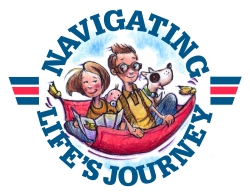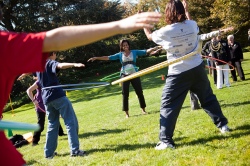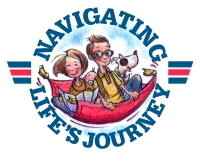Ways to lower your blood pressure
Here’s an idea…

Did you know that May is National High Blood Pressure Month? Did you know that about 1 of 3 US adults have high blood pressure? High blood pressure makes the heart work harder, which increases your chances of stroke and heart disease. In 2010, more than 360,000 deaths (which is 1,000 deaths each day) in America were related to hig
h blood pressure, known as the “silent killer.”
In other words…
It is very important to monitor and maintain a healthy blood pressure. This can lower your risk of stroke and heart disease. Always check your blood pressure and make sure that it is within normal level, which according to the Nutrition Care Manual is 120/80. Some ways to help control blood pressure are:
- Maintain a healthy weight
- 30 minutes of physical activity throughout the week
- Eat a healthy diet high in fruits and vegetable but low in sodium, saturated fats, trans fats, and cholesterol.
- Manage your stress
- Limit the amount of alcohol you drink
- Take medication that has been prescribed to you
- Check your blood pressure regularly.
Here’s how you can use this idea to better your life…
The best diet for hypertension and any other heart problems is the Dietary Approaches to Stop Hypertension (DASH Diet). The Dash diet wants to limit the amount of sodium to 1,500 to 2,400 mg per day, and includes fruits and vegetables. Using the 2,000 calories per day the DASH diet will include 7 to 8 servings of grains, 3 which should be whole grains, 4 to 5 servings of fruits. Also, 4 to 5 servings of vegetables, 2 to 3 servings of low-fat or nonfat dairy, 2 or fewer servings of lean meat (fish or poultry), 4 to 5 servings of nuts (also seeds, and legumes), limiting the fats and sweets.
To find out more…
For more information about blood pressure you can visit these websites:
https://www.nutritioncaremanual.org/topic.cfm?ncm_category_id=1&lv1=5803&lv2=8480&ncm_toc_id=8480&ncm_heading=Nutrition%20Care
http://www.cdc.gov/Features/HighBloodPressure/
http://www.nhlbi.nih.gov/health/health-topics/topics/dash http://www.nhlbi.nih.gov/files/docs/public/heart/hbp_low.pdf
http://www.uaex.edu/health-living/food-nutrition/default.aspx
How to help build your child’s credit score
One in three young adults (ages 18-34) report that they are struggling with inability to  manage debt, according to a National Endowment for Financial Education poll. Outstanding revolving debt is about $900 billion nationally (Federal Reserve). Debt can be a tool or a trap. Consumers with the highest credit scores qualify for the best interest rates on home and car loans. Lower interest rates can save thousands of dollars over the life of a loan. Landlords, employers, and insurance agents often use credit scores to assess the risk of doing business with someone. Set your children up for financial success by teaching them to manage credit wisely.
manage debt, according to a National Endowment for Financial Education poll. Outstanding revolving debt is about $900 billion nationally (Federal Reserve). Debt can be a tool or a trap. Consumers with the highest credit scores qualify for the best interest rates on home and car loans. Lower interest rates can save thousands of dollars over the life of a loan. Landlords, employers, and insurance agents often use credit scores to assess the risk of doing business with someone. Set your children up for financial success by teaching them to manage credit wisely.
Teach your child how to check a credit report. There are two purposes for checking your child’s credit report. First, you can teach your child how to check and read a credit report. Second, you can monitor for identity theft and fraud. There are three main credit reporting bureaus: Equifax, Experian, and TransUnion. Individuals are entitled to a free report from each bureau each year. Check one report every four months to monitor throughout the year. Be sure to use the correct website address at www.annualcreditreport.com. Look for incorrect information. If you find errors or suspicious activity, be sure to contact the credit bureau.
Start a credit history. Individuals build a credit score by using credit wisely. Add your child as an authorized user or co-sign an account with your young adult child. An authorized user may make purchases using your account. You are responsible for paying the debt. Your good management of the account will reflect positively on building your child’s credit score. However, if you have late payments and keep the card maxed out, this will not only hurt your score but can also damage your child’s credit score. If your child is 18 or older, you can co-sign a credit card with your child. You and your child are equally responsible for paying the bill. If your child overspends or makes late payments, this can reflect poorly on your credit too. Whether authorizing or co-signing, it’s important to set ground rules. Make sure your child knows what purchases are acceptable to charge on the account. Set usage limits. Co-signed cards can have a low limit to keep your child from overspending. A low limit keeps total debt to a manageable amount in case you end up having to pay all of the charges.
Be a good role model. Children learn from their parents. They are likely to repeat behaviors they observe in their parents. Talk to your kids about good financial management practices. Live within your income. Limit your use of credit. Make more than the minimum payment or pay off balances monthly. Pay all bills on time.
5 Bad Money Habits to Avoid
Be Money Smart – Avoid Bad Habits
Smart money management is a big boost to quality of life. Bad habits can derail your financial well-being. Here are 5 bad money habits consumers should avoid:
- I’ll think about it tomorrow. Scarlet O’Hara’s famous line from Gone with Wind stated “I can’t think about that right now. If I do, I’ll go crazy. I’ll think about that tomorrow.” It may have worked for Scarlet but it’s bad advice for financial management. Sometimes we’re tempted to put finances – bills, bank statements, retirement planning – out of sight and out of mind. The best way to build financial stability is to take control of your finances. Know your income and expenses. Create a plan for spending and saving. Set goals for the future. Make a list of action steps to reach your goals.
- Comfort shopping and impulse buying. The best laid plans can go astray when we fall prey to emotional spending. Shopping for pleasure and entertainment can be fun but often results in unwanted debt. Advertisers attempt to beguile consumers into making unplanned purchases. Tempted to stray from your spending plan? Stick with your shopping list. Stay focused on your goals.
- I’ll start saving later. Delaying saving can be a costly mistake. Time is critical for growing savings and investments. Small deposits can add up to big savings through the magic of compound interest. Save for emergencies, for retirement, and for goals such as home ownership or education. The sooner you start, the more your money will grow. Make saving a priority now.
- Waiting for a windfall. It’s easy to think “I’ll pay that off when I get my next raise” or “I’ll use my tax refund to catch up on my bills”. This type of financial planning puts consumers deeper in debt. While waiting for the windfall, additional critical expenses may arise. Don’t spend money you don’t have.
- Keeping up with the Joneses. The latest gadgets, the newest car, a bigger house – it’s easy to get caught up in the spirit of competition. Think about your needs and values. Make decisions that build long-term financial security. Don’t play the game of conspicuous consumption.
For more information about financial management visit the University of Arkansas Cooperative Extension Service website at www.uaex.edu

Here’s a great idea…
In his book, The Whole Child, Seamus Carey says, “The emotions and feelings that children experience are often far more complex than their ability to articulate them. They often get frustrated trying to express their emotions and feelings, because words often fail to convey the depth of emotional experience. Parents effectively guide children beyond their frustration by listening for at least one idea that can help the child to articulate clearly.” (p. 72)
In other words…
Children sometimes have difficulty dealing with their emotions, especially when they feel that they are not being heard or understood by those around them. As parents, we can help our children the most by inviting them to share and talk openly with us about their feelings. We can help them build an emotional vocabulary and be better equipped to deal with their feelings.
Here’s how you can use this idea to have a better life…
The next time your child is trying to express an emotion take time to listen to what they have to say. Help them elaborate on their feelings and teach them new words to describe what they feel. The more you talk with your child about what they are feeling, the more understood they will feel and the more comfortable they will be sharing their emotions with you in the future.
To find out more…
about parenting, check out The Parenting Journey or See the World Through My Eyes programs at uaex.edu/families, follow us at facebook.com/navigatinglife or contact your local county Extension agent. You can also read Carey’s The Whole Child.
Don’t Let the Rain Stop You from Exercising!

Here’s an idea…
As you may know, April is a rainy month and many people tend to stay inside and do nothing. The rain stops most people from doing most things, for example: grocery shopping, doctors appointments, and also exercising. However, it’s not necessary for the rain to interfere with your parade (or exercise).
In other words…
Exercise can be good for the body and has many health benefits. Exercising gives you energy and makes you feel better. It can help prevent excess weight gain and maintain your current weight. It can also help prevent heart disease, hypertension, stroke, metabolic syndrome, type 2 diabetes, and depression. Exercise can also help improve your mood, relaxation, sleep, and stress level.
Don’t make exercise a chore. Have fun! Take this opportunity to gather with friends or make new ones.
Exercise can have a huge impact on a person’s life.
Here’s how you can use this idea to better your life…
If you’re aiming to be more active, you’re on the right track to improve your health. Regular physical activity is an important part of a healthy lifestyle. Need help to put your plan into practice? There are many different rainy-day exercise that do not require a gym or an outdoor environment.
- Strength training – Body weight exercise is another effective home fitness routine that includes pushups, crunches, side planks and dips. A set of free weights is good for doing bicep curls, squats and lunges. Stretch bands add resistance, to work most muscle groups and they are easy to pack so a business trip or vacation doesn’t derail your exercise routine.
- Cardio workouts should be part of a fitness routine. At home, exercisers can get their heart rates up by doing jumping jacks, high knees and jump squats.
- Flexibility – Yoga, stretching and balance routines can be easily accommodated into a rainy day schedule. There are many smartphone apps, website and online videos available that develop flexibility and balance.
To find out more…
For more information, on healthy lifestyle habits:
http://www.uaex.edu/health-living/health/fitness/
http://www.mayoclinic.org/healthy-lifestyle/fitness/in-depth/exercise/art-20048389
Parents of teens and young adults – beware of money pitfalls

Here’s a great idea
Should you be concerned for your Millennial or younger child’s future financial security? More than half of young adults have student loan debt with the average amount above $30,000 (http://crr.bc.edu/briefs/will-the-explosion-of-student-debt-widen-the-retirement-security-gap/). Estimates show that Millennials may have fewer resources in retirement than previous generations (http://longevity3.stanford.edu/blog/2012/08/21/financial-security).
In other words
School debt increases future financial risk for young adults who are less likely to save, invest, or purchase a home because starting salaries are low and extra income is going toward repayment of student loans. Children learn from their parents. Be a role model for good financial management. Live within your income. Manage debt wisely. Save for a secure financial future.
How this applies to you
Here are some specific ways to guide your older teen or young adult child in maintaining financial stability:
Minimize school debt. Borrow only the minimum amount needed and supplement with income from work. Use federal loans before private loans.
Save for retirement. Teens and young adults who are working qualify to open an IRA. Saving even very small amounts at a young age can build a big retirement fund.
Build your credit score. Young adults can’t get a credit card on their own until age 21. However, late payments on rent or other bills can show up on a credit report. Make sure to teach your kids about checking their credit report and building a good credit score. Children, teens, and young adults can fall victim to fraud and identity theft. Teach them how to check their free credit report at http://www.annualcreditreport.com.
To find out more
The Cooperative Extension Service is your source for reliable, research-based information to improve quality of life. Discover the latest recommendations for creating a spending plan, managing credit, building your savings and investing for the future. Learn more at www.uaex.edu.
Connect you way to greater happiness

A Great Idea …
“If you begin today to improve and cultivate your relationships, you will reap the gift of positive emotions. In turn, the enhanced feelings of happiness will help you attract more and higher quality relationships, which will make you even happier, and so on.” (Sonja Lyubomirsky, leading research psychologist, in her book, The How of Happiness. p. 138)
In Other Words…
There are cycles that lead to misery and those that lead to happiness. Some people feel unhappy and tend to withdraw from other people. They are likely to get more unhappy and lonely. In contrast, spending time with good people can start a cycle that leads to happiness. Happiness draws more people. More people can bring more happiness. We can choose to descend into sadness and loneliness or climb toward happiness.
How This Applies to You…
Notice the people around you. How can you connect with them? Maybe you can start a lunch-time conversation with a co-worker. You can take a walk with a neighbor. You might take treats to relatives. If you’re not sure how to get the conversation rolling, simply ask them what has made them happy lately. The more practice you get interacting with others, the easier it will become and the happier you will feel.
To Find Out More…
For an excellent (and free!) program on improving your personal well-being, check out The Personal Journey or Managing Stress at on the UAEX website.
For more in-depth reading we recommend The How of Happiness by Sonja Lyubomirsky or Authentic Happiness by Martin E.P. Seligman.
By: Ashley Terry and Ashley Henderson
Real love is more than a feeling

A Great idea…
“In real life, love is much more than a feeling. It is a long series of decisions to be together and give to one another, a commitment to work together to build a shared life, a day-to-day involvement that changes who we are as people.” (Blaine J. Fowers in his book, Beyond the Myth of Marital Happiness p. 10)
In other words…
Love is not just a feeling that takes over our hearts and makes us feel warm and devoted. Feelings will come and go. Love is a choice. We choose to love our partners in many ways. We choose love when we emphasize their good qualities. We choose love when we look for solutions rather than blame. In thousands of ways, we choose to love. When we consistently CHOOSE love, then the feelings come.
How this applies to you…
What are the ways you are already choosing to love your partner? What additional choices can you do to strengthen your relationship further? What can you choose to do today to increase the love in your relationship?
To find out more…
For an excellent program on marriage, see Marriage Garden!
For an excellent book focused on marriage, read Beyond the Myth of Marital Happiness by Blaine J. Fowers or The Marriage Garden by H. Wallace Goddard and James P. Marshall.
By Ashley Terry
Family Time: Unplugged, or Plugged In Together?

By Brittney Schrick
Here’s a great idea…
In this digital age, it becomes more and more difficult to compete with screens, social networking, and other digital media for the attention of our children. In attempting to ensure quality family time, it is often suggested that we unplug and interact together without the distraction of screens. This sort of time is necessary, and there are lots of ways a family can be together without screens. Setting limits for screen time, especially for younger children, as well as setting rules for how and when screens are used are important and necessary boundaries. However, all screen time is not created equal! Sometimes, a screen can be helpful in bringing family together; it’s all in how you use it.
In other words…
Unplugged, screen-free time together is an absolute must for families, and screen time (meaning all screens, not just TV) should be limited and controlled. Go outside and play, take a walk, play a board game, cook a meal, sing silly songs, or just have a conversation every day! All of these ways of being together make families stronger and happier. But, all quality time does not have to be screen-free!
How this applies to you…
Play games together: Do your kids like to play video games? Play with them! Let them teach you how to play. Is your child constantly telling you about Minecraft? Let her show you too! For older children especially, knowing that their parents care enough about them to try something they enjoy is very meaningful.
Get active indoors: Play active games like Wii sports or Just Dance together! It can be silly, a lot of fun , and many of those games are a great workout.
Have a family movie night: Sit together and watch a film. Maybe even have a living room or bedroom floor picnic. Make the focus on the shared screen, and keep other screens out of the way (no checking your email or texts while watching!).
Use your devices to stay in contact with distant family or friends: Many of us live far away from grandparents, aunts and uncles, or close friends. Use your device to have a family call with someone you love!
To find out more…
Setting limits on screen time: http://www.letsmove.gov/reduce-screen-time-and-get-active
Smart screen time: http://www.joanganzcooneycenter.org/2014/12/04/can-you-turn-screen-time-into-family-time/
UAEX Family Life Friday Blog: http://www.uaex.edu/health-living/personal-family-well-being/family-life-fridays-blog/default.aspx
Photo:http://www.letsmove.gov/lets-move-outside
Giving your way to love

Here’s a great idea…
Catherine Thomas, PhD, observed that we often get it all backwards: “Much of
the emotional pain that we have does not come from the love that we were not given in the past, but from the love we ourselves are not giving in the present.”
In other words…
We often think that if others would just give us the love we crave then our emotional needs will be met. Paradoxically, the opposite is true. If we will forget about ourselves and find ways to serve and show love to others, we will find greater well-being and satisfaction.
Here’s how you can use this idea to have a better life…
The next time you wish someone would pay you more attention by listening to you or doing something with you, don’t wait for them! Find a way that you can show them special attention, listen to them, or invite them to do a fun activity with you.
To Find Out More…
about personal well-being, check out The Personal Journey or Managing Stress programs at www.uaex.edu, like us at www.facebook.com/navigatinglife or contact your local county Extension agent. You may also enjoy reading Authentic Happiness.
By Ashley Terry
